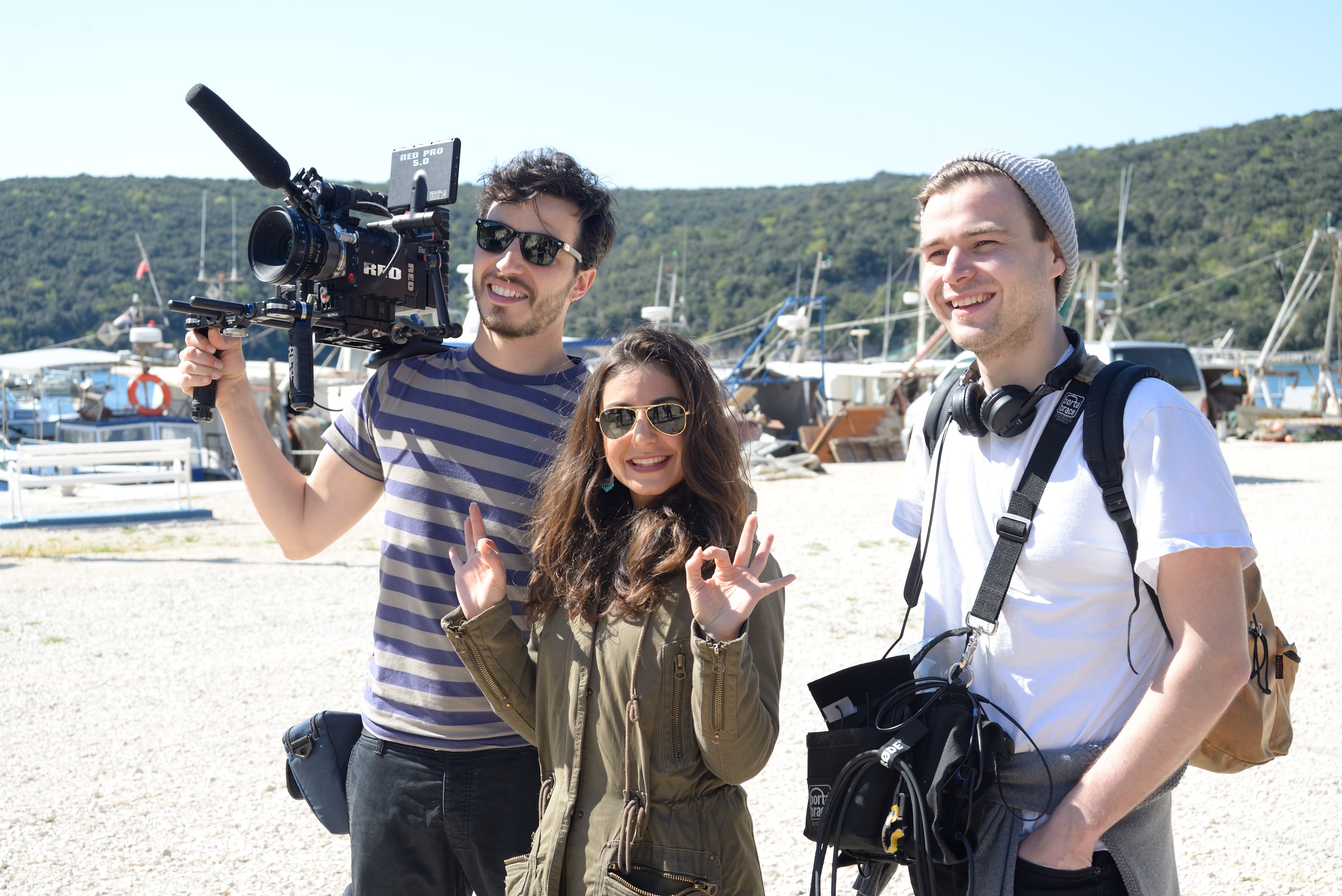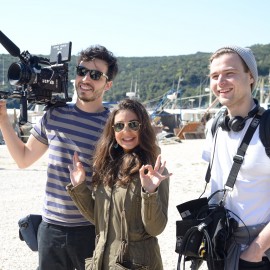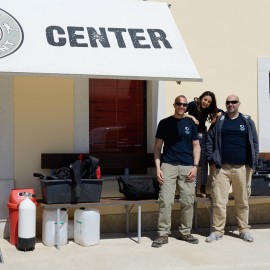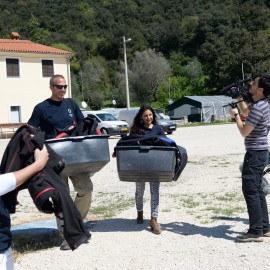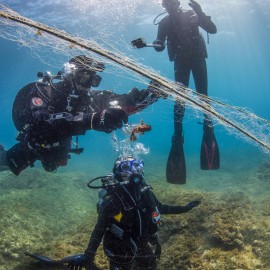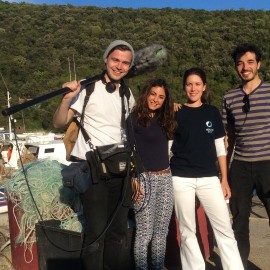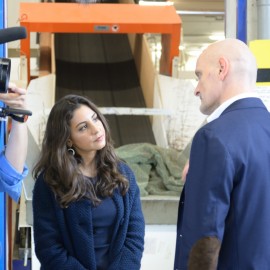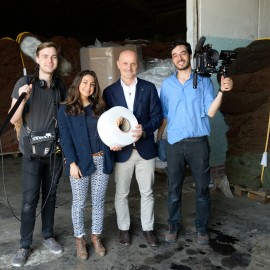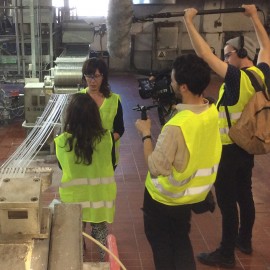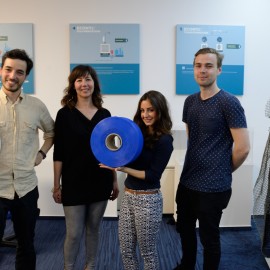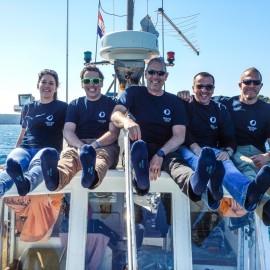It is not common to see a red scorpionfish in the shallow waters of the Adriatic Sea, but there he was struggling to be saved from the fishing net where he was trapped. This adventure started long before the meeting with our Scorpion fish friend. It started nearly 2 years ago when Healthy Seas was in its first pilot year and a reporter contacted us to know more about our initiative. Her name was Gelareh Darabi and she was working for the flagship environmental TV program Earthrise aired on Al Jazeera international. Only at the beginning of this year did Al Jazeera confirm they would feature our story on their program and things were set and organized.
Our journey from waste to wear took three days. There we were in the Adriatic where our friend, the scorpionfish, was entangled in the fishing net that we were going to recover. The weather was great and the seas were calm in the Croatian waters near the Luka Krnika harbor. At great risk of encountering its poisonous spine, dive coordinator Pascal Van Erp got close enough to the fish to disentangle it. Thanks to our dive photographer Cees Kassenberg, our newly freed friend can be seen below swimming off into the great unkown.
It was an incredible sight for our TV crew friends to to see the actual liberation of a fish. Too often we find their lifeless bodies trapped in the nets we recover. Over the course of time we know the recovery of nets will save many fish, but it is a rare opportunity to be in the right place at the right time to free them. With such an exciting first day, the crew anxiously awaited to see what would come next.
Once back from the trip, Darabi and Van Erp, together with Healthy Seas project coordinator Veronika Mikos, cleaned the nets of other victims and stored it in a big bag. We took a sample of the net to take with us on our journey to the laboratory in Ljubljana where all nets are checked to be sure they are Nylon 6 and suitable for regeneration.
With our piece of net in hand, we headed first to Ajdovscina, a small town in the middle of the Slovenian hills where Aquafil has its waste treatment center. This is where waste is gathered from all over the world to be prepared for regeneration. The warehouse is full of nets coming from the Healthy Seas initiative but also from other waste sources like fish farms, the fishing industry, old carpets and other plastic components. The expansive warehouse is so full of waste material that Giulio Bonazzi, president of Aquafil, tells the Earthrise crew the story of how it got its nickname: “AKS: any kind of shit”. The magnitude of the waste accumulated here, constantly arriving and leaving for regeneration, is astonishing.
The massive nets are fascinating to film, especially when there are so many surrounding you. It’s not something you see everyday! Bonazzi gives a tour of the warehouse explaining how everything is processed, prepared and how the idea of regeneration came to life.
At the conclusion of Bonazzi’s tour, Gelareh Darabi and the director are offered the opportunity to get a birds eye view of the warehouse via forklift. They jump at the opportunity to overlook the sea of fishnets stored below.
The third day approached us much quicker than we thought. With our net sample still in hand, it is time to find out if it is Nylon 6. We go to the chemical laboratory where the analysis takes place. It is Nylon 6! It will be recycled at the end of the diving season and become a great textile product.
Now at the ECONYL® Regeneration System in Ljubljana with Maria Giovanna Sandrini, head of brand and corporate communications at Aquafil, we prepare to learn more about the regeneration process.
After applying our safety equipment, we tour the plant trying to understand a process that is mainly invisible to the eye but contains six intriguing steps. The nets are thrown into the dissolutor where they start their journey of regeneration by returning to their original state of caprolacatam – the raw material used in the production of Nylon 6. This step is known as depolymerization. After returning to its chemical state, the process of polymerization is the same as the one of traditional nylon. Because of this, the resulting material is a yarn with the same chemical characteristics and performance as virgin nylon. We see the caprolactam coming out from the pipes then the spaghetti polymers cut into chips that are then extruded into yarn for textiles and carpets.
Our journey ends discovering the great products that can be produced using ECONYL® regenerated yarn. Desso is launching a new collection of carpet tiles made with ECONYL® yarn which is part of Desso’s Carpentecture Transitions Collection called Salt, Rock, Desert and Grain. The collection brings organic beauty to office spaces and helps create flexible spaces with different areas for working, meeting – and quiet contemplation. Interface has the Net Effect™ and Human Nature™ collections inspired by the earth’s natural habitats : water, sand, stones and grass to create a calming and serene feeling that connects consumers back to the natural environment. As for textile, we discover the beautiful and trendy swimwear by Koru, the Catchy Socks made by our founding partner Star Sock with a unique brand name and packaging and the great Kaufland socks.
It has been a wonderful journey and we are all tired but excited to see these final products that come also from the nets recovered by the Healthy Seas initiative. I wonder what that Scorpion fish would say about this. The net that could be his deadly trap will soon be a pair of socks or a swimwear. What a lucky moment it was when he met our divers with the Earthrise team!
Samara



